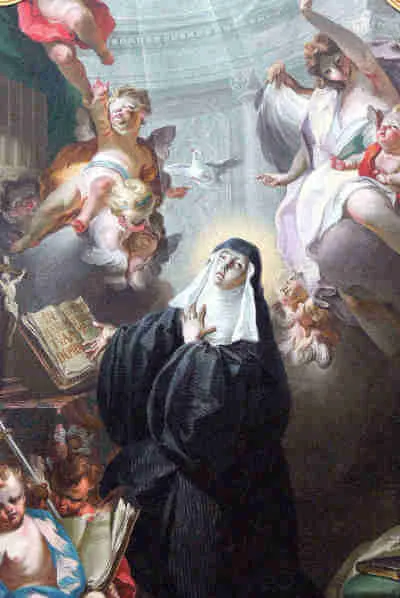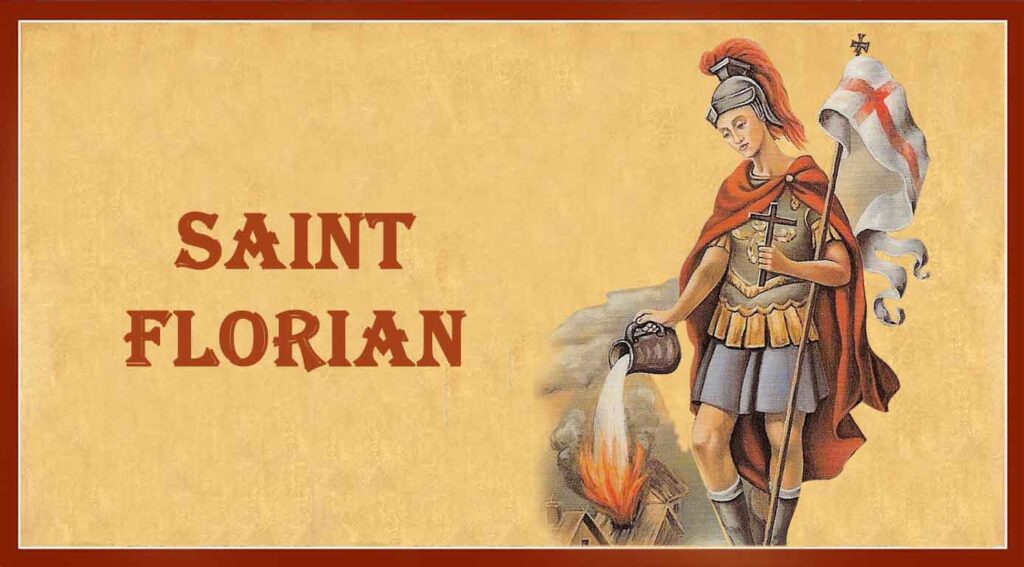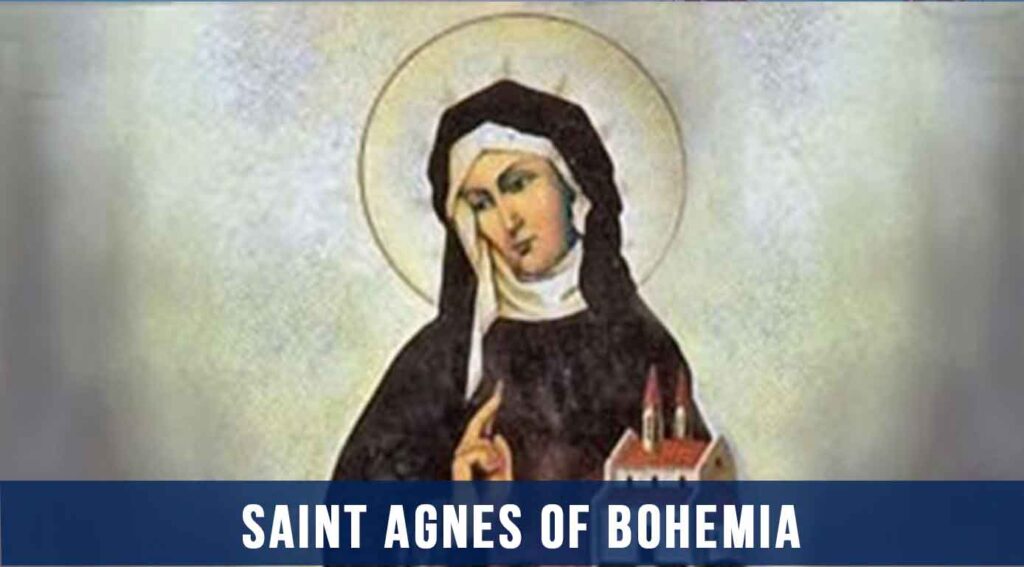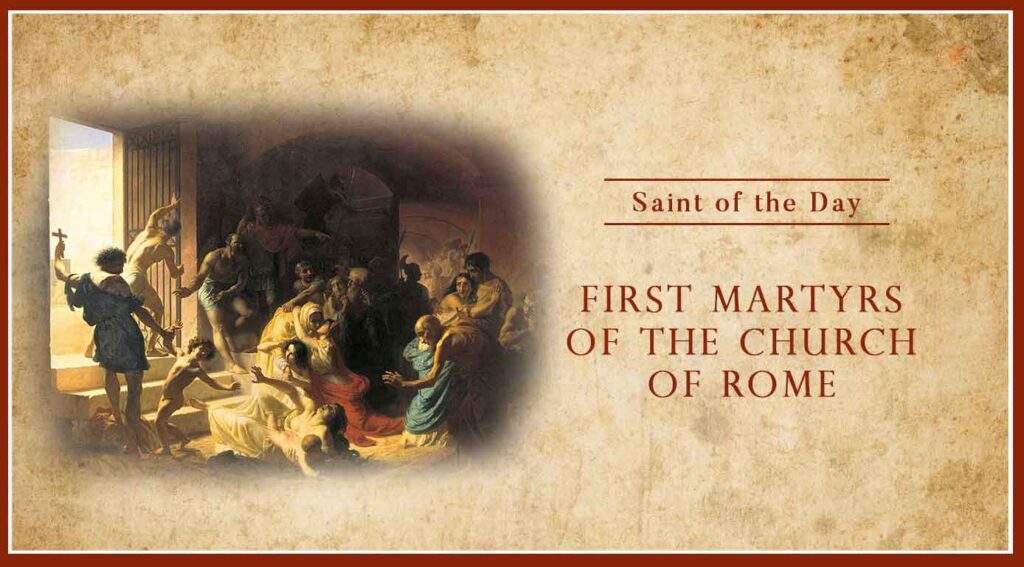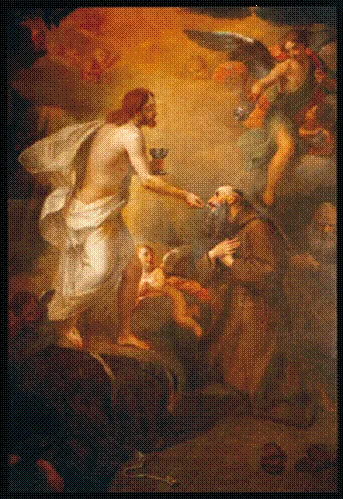Patron Saint of nuns, school, tests, reading, convulsive children; Invoked against storms and rain; Pre-Congregation canonization
Little is known about the life of Saint Scholastica, yet her influence upon the Church is undeniable. She was born into a wealthy family around the year 480 AD, in the town of Nursia, central Italy, shortly after the fall of the Western Roman emperor. It was a chaotic time, politically speaking, but also a time when God began to manifest His divine stability through her. She had one brother, most likely a twin, by the name of Benedict. Benedict and Scholastica are now honored as great saints. Both had a powerful influence upon monastic life as we have it today, Benedict being the father of Western monasticism and Scholastica its mother.
As a child, Scholastica dedicated herself to the service of God, taking no interest in the things of this world. She lived modestly, despite being raised in a wealthy home. When Benedict left home to become a hermit and to eventually found a monastery with a new monastic rule, she marveled at his hidden life of prayer and work. His vocation called out to her, and she received permission from the local bishop to enter a home of virgins who chose to adopt Benedict’s new monastic rule. Benedict assisted them and made Scholastica the abbess of the home.
Benedict’s new form of monasticism focused on forming permanent, self-contained, and self-supporting monasteries that followed a strict regimen of prayer and work. After aspirants’ callings were tested for a period of time, they made vows, permanently committing themselves to God and the community.
Their lives became structured and ordered under the direction of an abbot or abbess to whom the monks and nuns vowed obedience. Soon after Benedict’s humble monastery on Monte Cassino began to bloom, Scholastica received permission to adopt his rule with a group of virgins, making them the first convent of Benedictine nuns. In the centuries to follow, their way of life spread far and wide across the Western world.
In his book Dialogues, Pope Saint Gregory captures the holy love that Benedict and Scholastica shared. Though Scholastica’s convent was only a few miles from Benedict’s monastery, the two would only get together once a year, in keeping with their strict rule of life. Those meetings fanned into flames their shared love for God and the fruits of their prayer and mutual calling to this new way of life. Each year they met at a nearby house and spent the day conversing on the holiest of topics. When these twins were around the age of sixty-three, they met for what would be their final conversation on earth. They spent the day praising God and engaged in spiritual talk.
After a light dinner, Benedict announced that he and his companions needed to leave and return to the monastery. Scholastica begged him to stay so that they could continue conversing about God throughout the night. Benedict responded to her, “Sister, what are you saying? I simply cannot stay outside my cell.” Scholastica knew, however, that their holy conversation needed to continue, so she bowed her head in prayer, and God sent forth a lightning storm so powerful that Benedict and his brothers could not leave.
Scholastica’s love for Benedict and her desire to continue with the praises of God throughout the night met with God’s approval and God provided the way. They parted the next day, and three days later, Benedict had a vision of his sister’s soul being taken to Heaven in the form of a dove. He had his brothers bring her body to the monastery, and Scholastica was buried in the grave intended for Benedict. Four years later, Benedict died and was buried in the same grave with his sister. The two were united by grace and a shared mission in this life, and they would forever share a grave from which they will rise together on the last day.
Pope Saint Gregory opines that Scholastica’s prayers were answered over Benedict’s objection because her love was great. “She did more which loved more,” he wrote. The witness of these siblings should especially teach us the value of holy friendships that mutually build each other up and give glory to God. We are made not only for communion with God, but for communion with one another. These saintly siblings give witness to this holy fact.
Source: https://mycatholic.life/saints/saints-of-the-liturgical-year/february-10-saint-scholastica-virgin/


